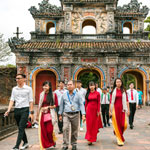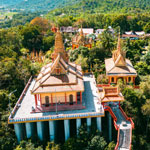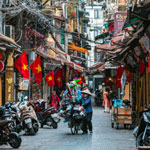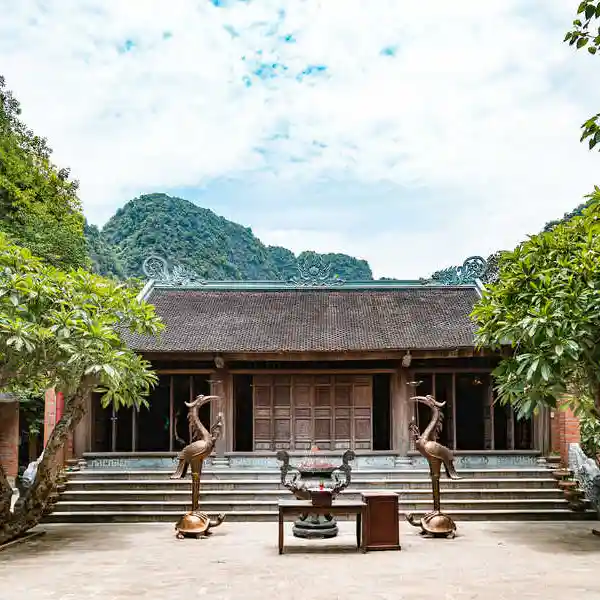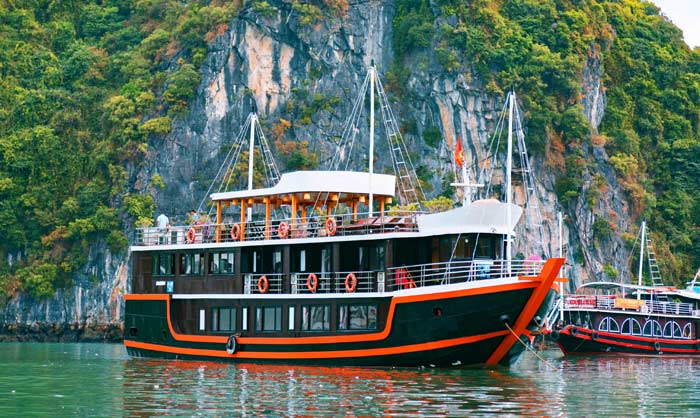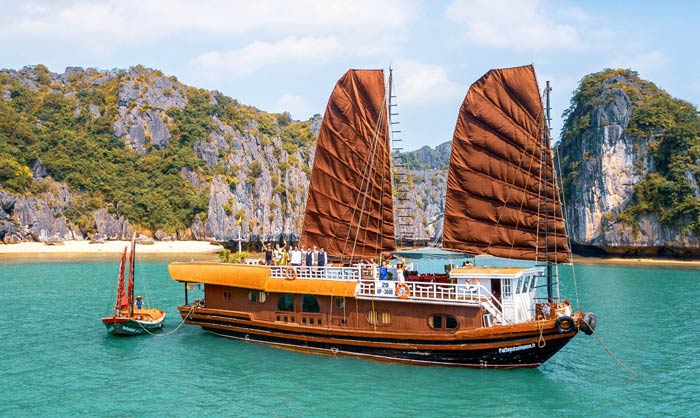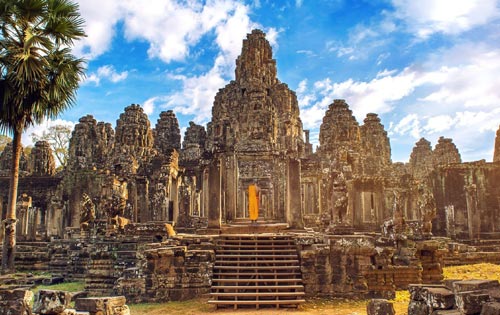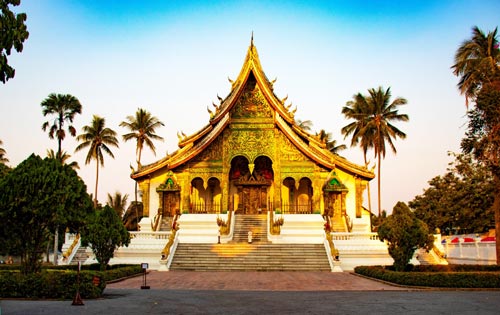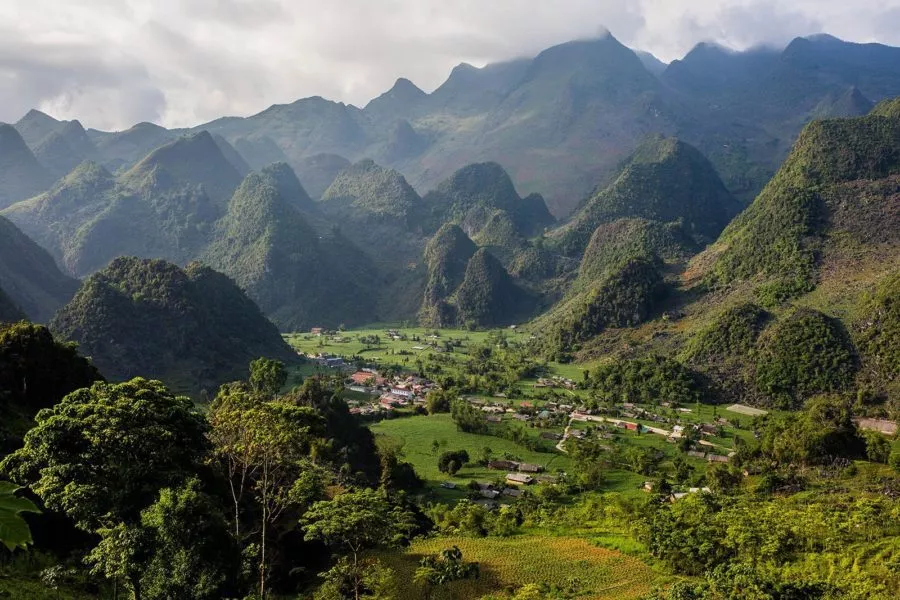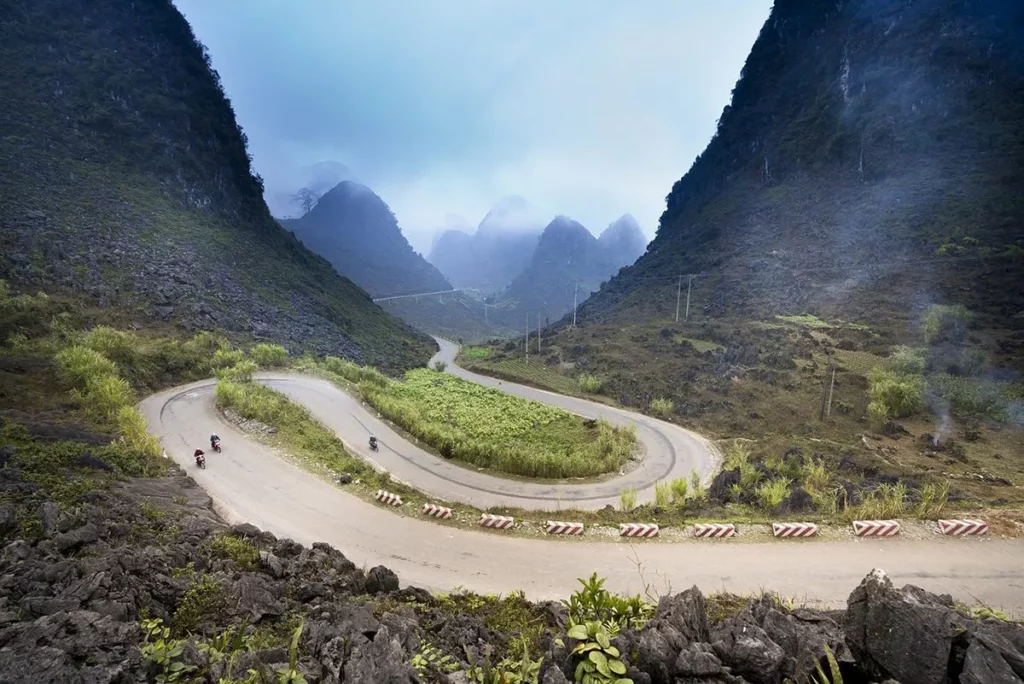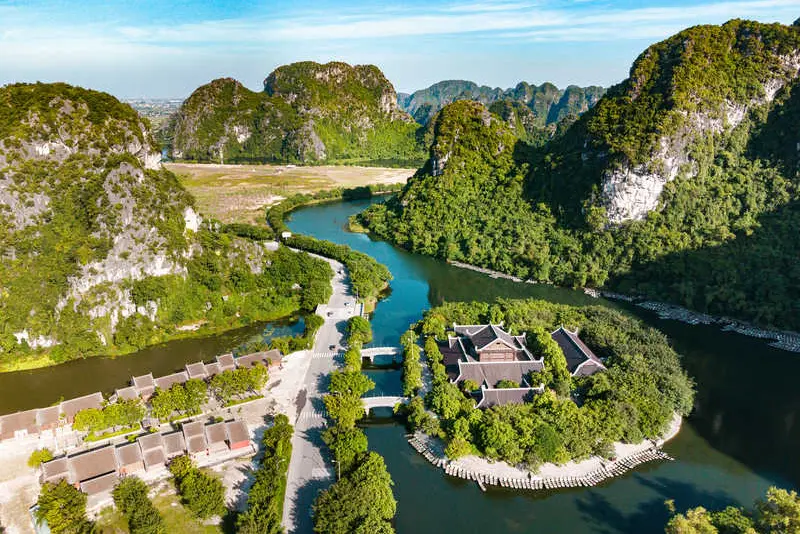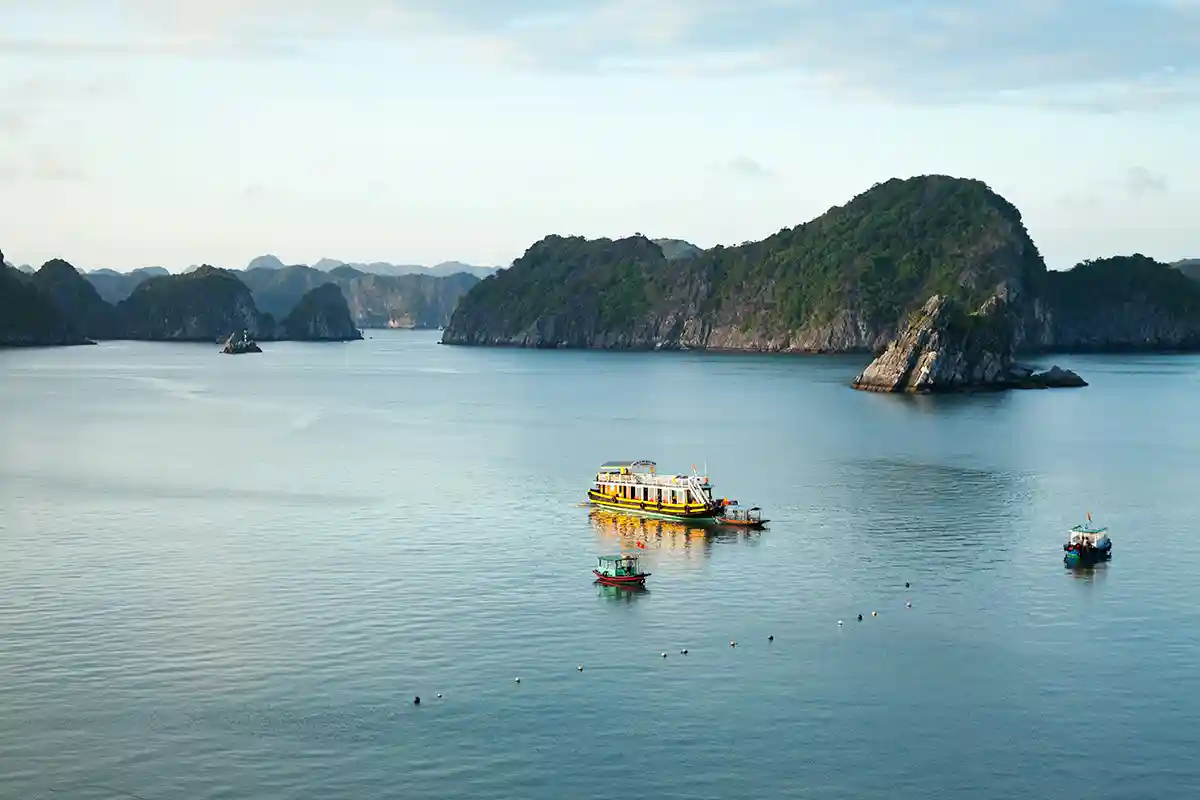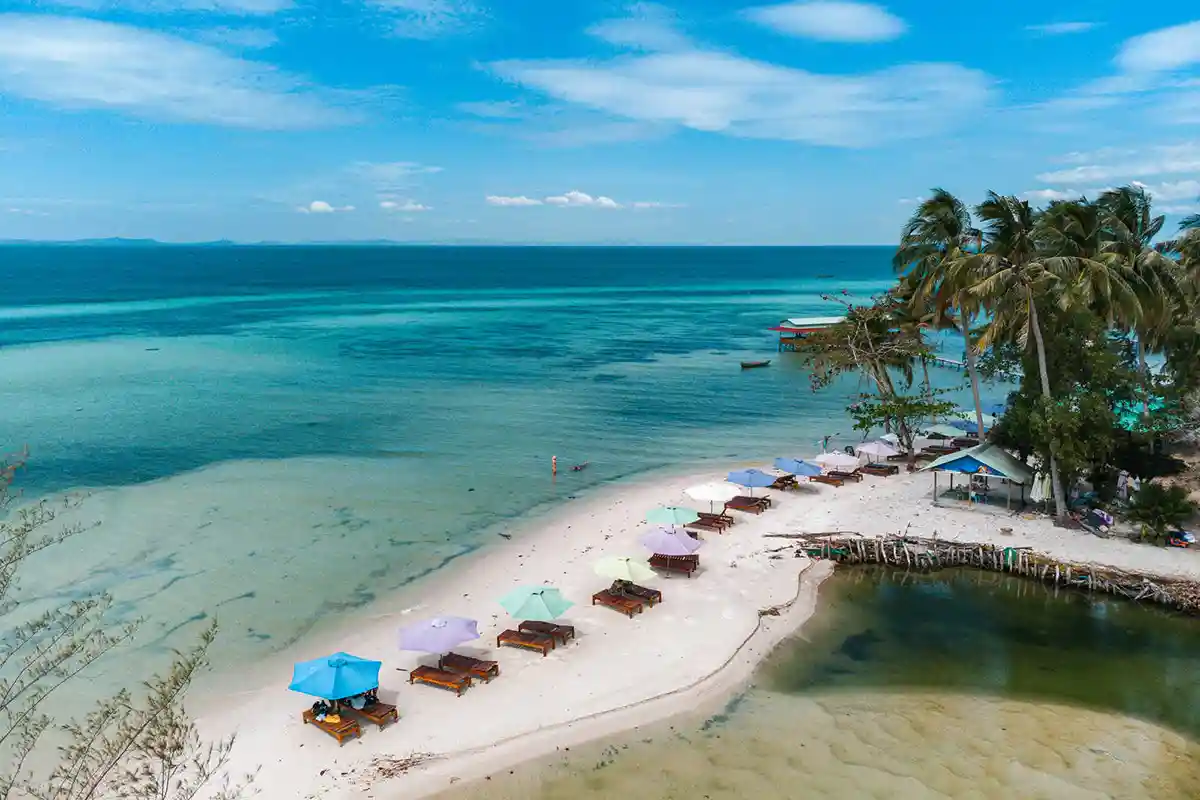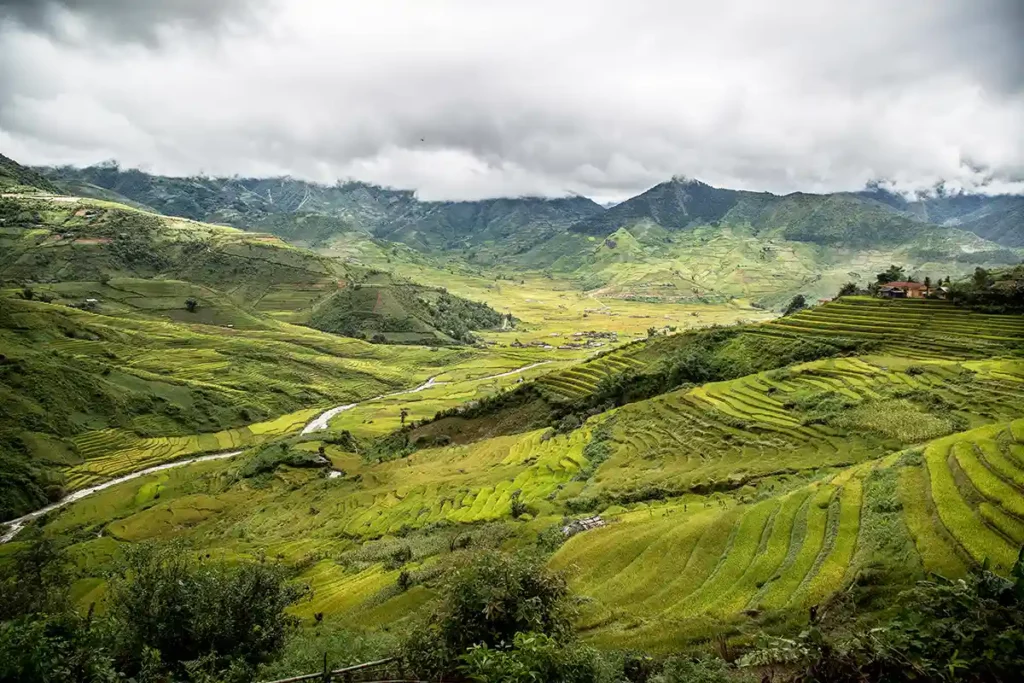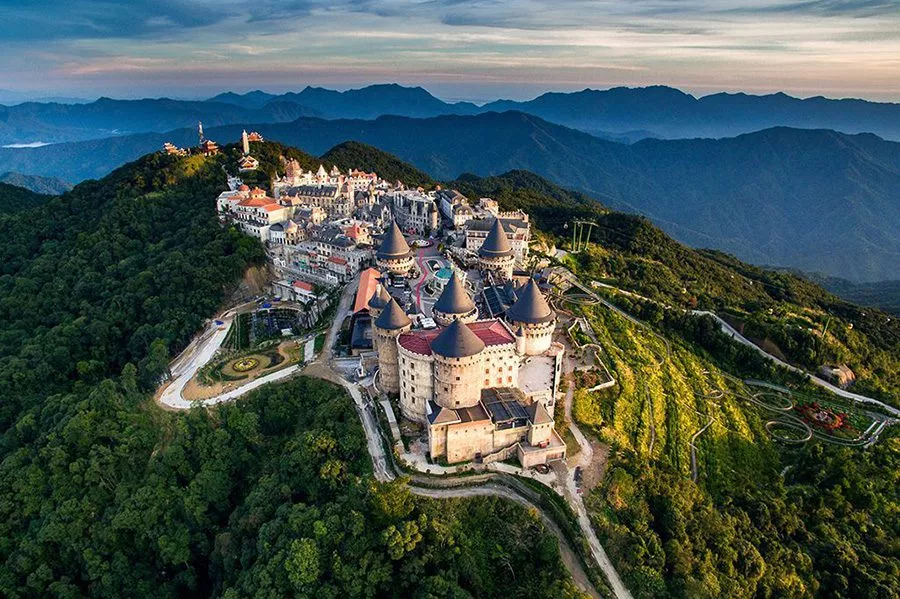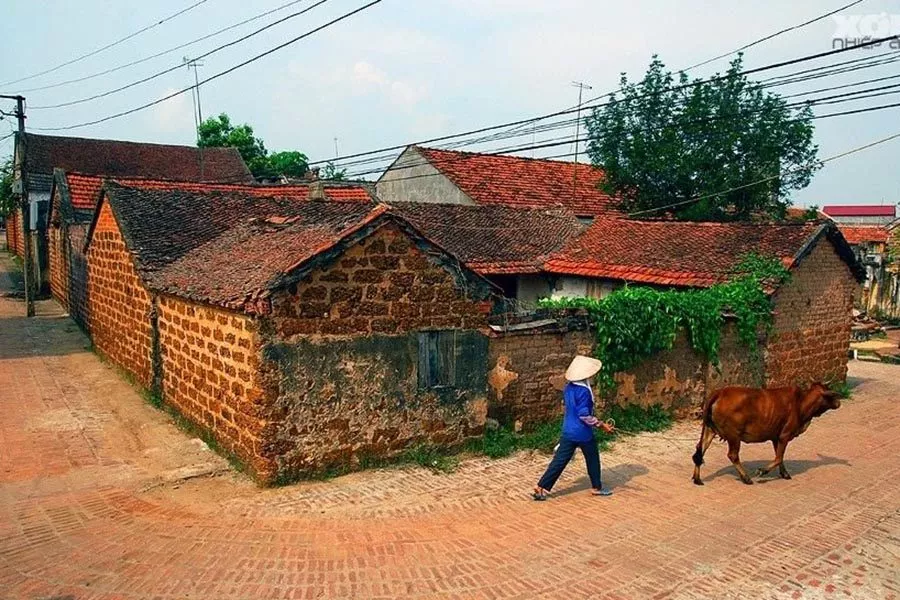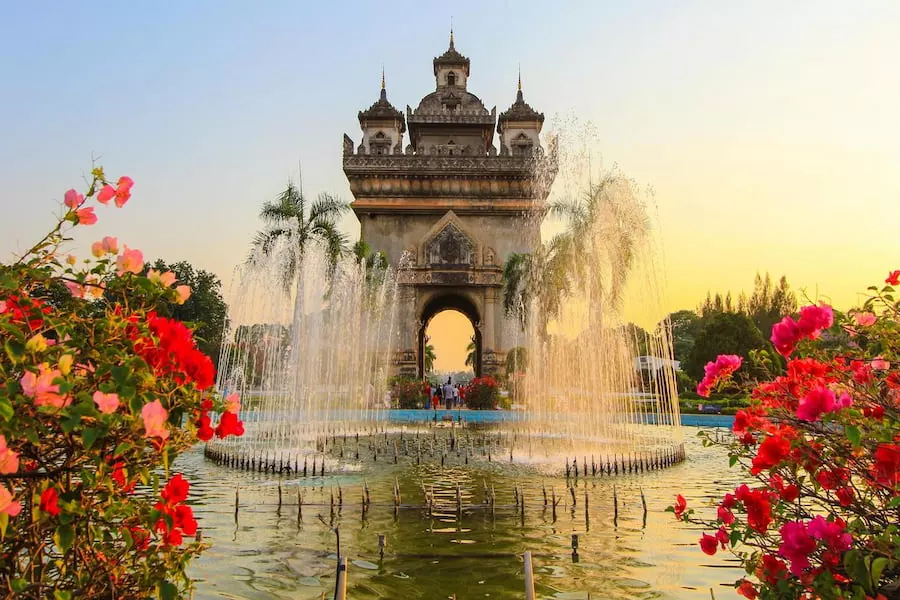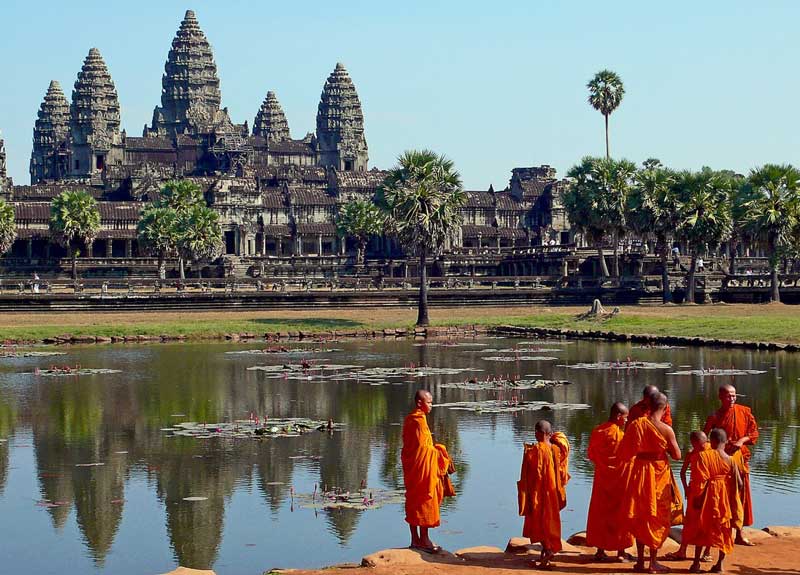Hanoi is the political, administrative, cultural, and historical capital of Vietnam. In 2010, the city celebrated its millennium, and on this occasion, the authorities built the longest mosaic in the world on the dike wall that protects downtown Hanoi from the floods of the Red River.
It is a fascinating city where ancient and recent history coexist with today’s vibrant energy — a constant flow of motorbikes and countless small shops lining the streets.
Hanoi is still the Asia you’ve always imagined!
So: what should you visit in Hanoi?
To immerse yourself in this city, we suggest in this article to explore the most important cultural and historical sites of the Vietnamese capital.
A Brief History of Hanoi
Hanoi became the capital of Dai Co Viet (968–1054) after Ly Thai To, founder of the great Ly dynasty, expelled the Chinese invaders from what is now northern Vietnam. The importance of Ly Thai To in Vietnamese history is immense, as his victory ended more than a thousand years of Chinese domination.
Ly Thai To named the new capital Thang Long, meaning “City of the Rising Dragon.” According to legend, when he decided to establish his capital there, he saw a golden dragon spreading its wings over the city. Seeing this as a good omen, he chose to name the city in honor of the dragon.
Illustration: Ly Thai To and the dragon above the city that would become Hanoi
In the 13th century, the capital was ravaged by Sino-Mongol invasions until Le Loi achieved victory in 1428, becoming Emperor and founding the Le dynasty, which ruled until the 18th century. During this time, Hanoi developed a system of guild-based neighborhoods, each specializing in a particular craft. The city opened up to foreign merchants from Siam, Java, and southern China, and Vietnamese handicrafts—such as silk, satin, brocade, lacquerware, and porcelain—flourished throughout Asia.
Later, the Nguyen dynasty transferred the capital to Hue, and Thang Long lost much of its former prestige. The French, who arrived in 1882, renamed it Dong Kinh (“Eastern Capital”), which would later give rise to the word Tonkin, used to designate northern Vietnam. During the French colonial period (up to 1954), Hanoi was transformed into a Western-style city with elegant architecture and wide boulevards. Officially renamed Hanoi (“inside the river”), it became the capital of French Indochina in 1902.
From 1954, Hanoi became the stronghold of the Viet Minh, and in 1976, following the departure of the Americans and the reunification of the country, it was declared the capital of the Socialist Republic of Vietnam.
Throughout the centuries, Hanoi has remained at the heart of Vietnam’s tumultuous history. For this reason, visiting some of its most important and emblematic monuments is a must. Since the city was barely bombed during the Vietnam War, many of its historic sites are still in excellent condition and even continue to serve their original purposes today.
Hanoi and Its Different Names
Hanoi has remained an important city through the centuries, but its name has changed several times. Here’s a quick timeline to help you follow its evolution:
# Up to the 8th century: It was a small village the Chinese called the “Dragon’s Navel,” referring to the hollow at the top of Nung Hill.
# 866 – 1009: Dai La (“The Great Outer Citadel”)
# 1010 – 1831: Thang Long
# 1831 – Today: Hanoi
We will now describe several sites that reflect the cultural and historical diversity of Hanoi and Vietnam. This will help you choose the ones that interest you most and plan your personalized itinerary with us.
The Pagodas of Hanoi
When Ly Thai To came to power in 1010, he brought Buddhism to the highest level of the state. Buddhism thus became the official religion of the Empire, reaching its golden age. It was also during this time that the population became deeply imbued with Buddhist beliefs.
We will now introduce you to two of the most important pagodas in Hanoi
Tran Quoc Pagoda (6th Century)
Tran Quoc Pagoda, located on a peninsula of Hanoi’s West Lake, was built in the 6th century during the reign of the first Ly dynasty (541–603), a brief interlude during the long Chinese domination. It later became the spiritual center of the Ly dynasty (known as the “Later Ly” to distinguish it from the first).
Like the city of Hanoi itself, the pagoda has changed names several times: Khai Quoc(“Foundation of the Kingdom”) under the Later Ly dynasty ; Thai Tong in the 15th century and Tran Quoc (“Defense of the Kingdom”), its current name, since the 17th century (given by Emperor Le Hy Thong)
It was also relocated: originally built near the Red River, it was rebuilt in 1615 on Kim Ngu (Golden Fish) Islet, on the shore of the West Lake.
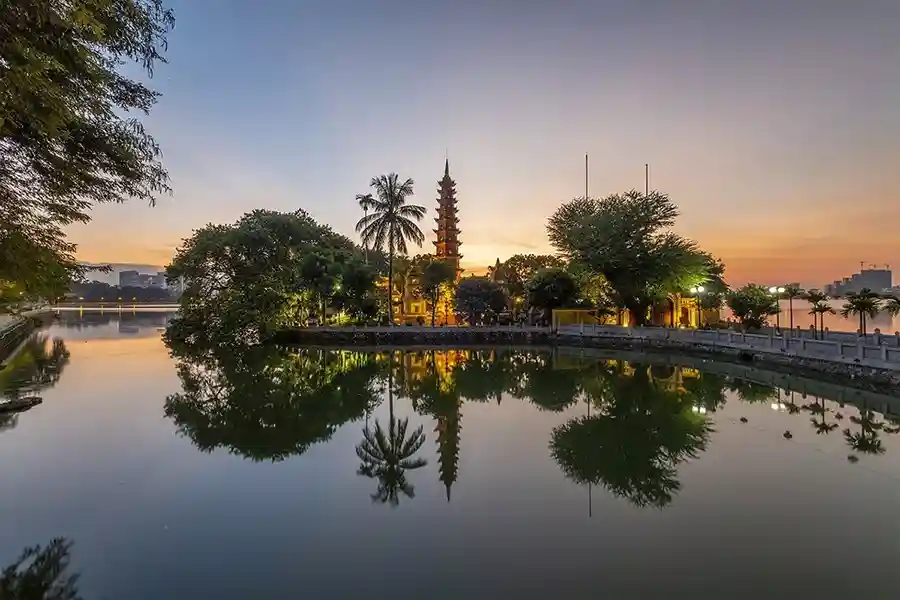
Outside Tran Quoc Pagoda, Hanoi, Vietnam
A major reconstruction took place in 1815, and many renovations have been carried out since then. Despite its importance, the site remains relatively small. The first courtyard houses the stupas of monks who marked the pagoda’s history. Visitors can then explore a small garden at the tip of the peninsula. Inside the main sanctuary, there are four Buddha trinities arranged in tiers, and outside stands a stele dating from 1639 recounting the pagoda’s history. Finally, you can rest beneath the Bodhi tree, a sacred fig tree from India—the cradle of Buddhism—under which the Buddha attained Bodhi (Enlightenment or supreme knowledge).
One Pillar Pagoda (11th Century)
The One Pillar Pagoda (Chua Mot Cot) was built in 1049 by order of Emperor Ly Thai Tong.
Legend says that the Emperor, unable to have a child, dreamed that the Goddess of Mercy, Quan Am, seated on a lotus flower, handed him an heir. Shortly afterward, the Emperor married a young peasant woman who bore him a son! In gratitude for this miraculous event, the Emperor ordered the construction of this unique pagoda.
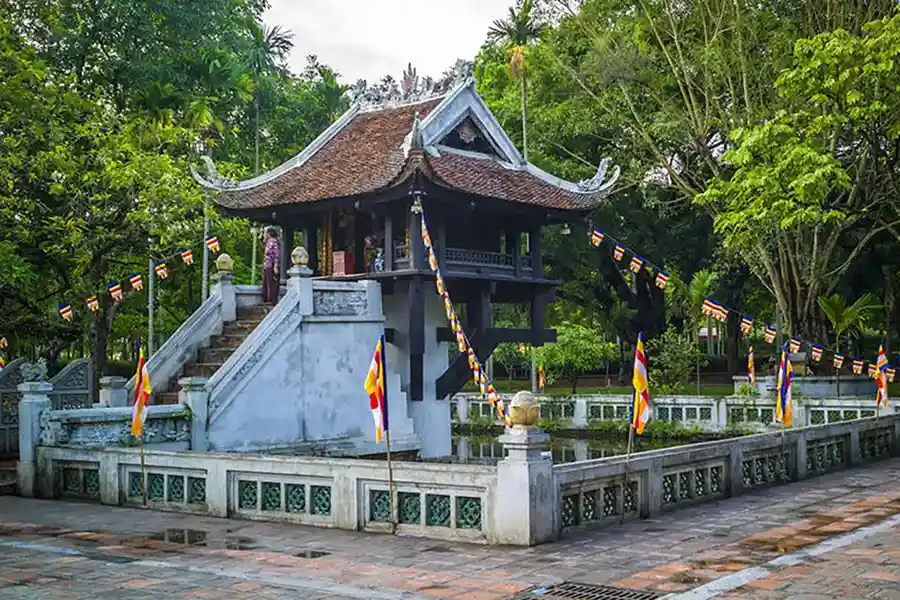
One Pillar Pagoda of Hanoi, Vietnam
This is why the pagoda stands in the middle of a lotus pond, supported by a single pillar. The pagoda itself is made of wood, but today the pillar has been renovated in concrete.
The pagoda is located next to Ba Dinh Square, near the Ho Chi Minh Mausoleum and Museum (see the map of mentioned sites at the end of the article).
The Legacy of Confucianism
While Buddhism most likely originated in India, Confucianism is a moral philosophy that came from China. Confucius is believed to have lived in the 5th century BC. According to his teachings, human behavior must follow five main virtues: benevolence, righteousness, propriety, wisdom, and sincerity.
In addition to these virtues, Confucian morality establishes a social order based on obedience, which is considered synonymous with harmony. This moral system has deeply influenced Vietnamese society, even though it has been criticized multiple times throughout history, including today. The younger generations often see it as a rigid tradition, no longer fully aligned with modern values.
The emblem of Confucianism in Hanoi is the Temple of Literature.
Temple of Literature (11th century)
The “Temple of Literature” was originally a university founded to teach arts and morality to the royal children of the first Ly dynasty. The creation of this university marked the introduction of the mandarin system into Vietnam’s intellectual culture. The young men selected to study there became the high-ranking officials serving the Nation and the State. Upon graduation, these scholars were known as the “sons of the Nation” (Quoc Tu Giam).
The adoption of Confucian moral principles by the elite served, in a way, to legitimize a power that at the time remained fragile.
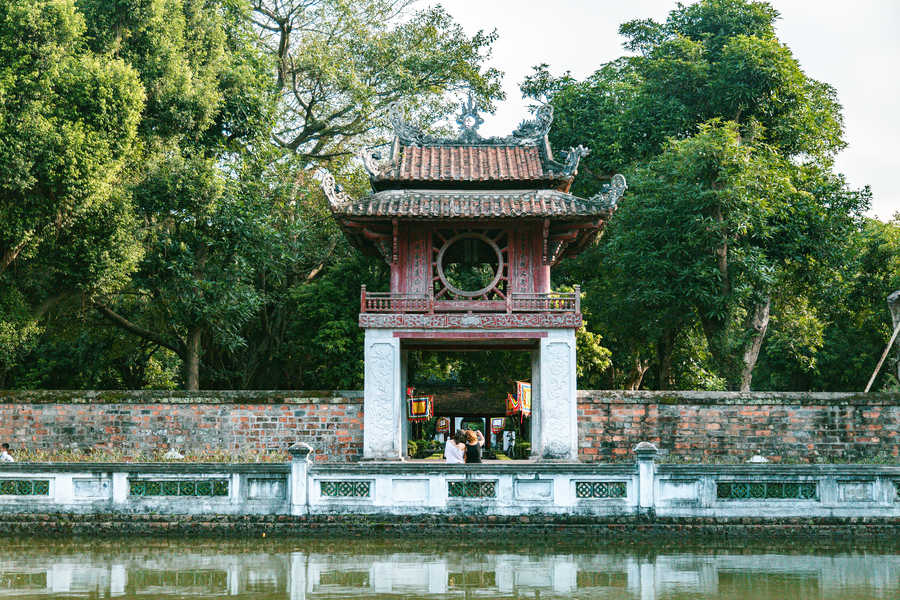
Temple of Literature, Hanoi, Vietnam
The university gradually opened its doors to wealthy families and learned men, regardless of their social origins. Only men, of course, were admitted…
Don’t worry — today, everyone can visit it! It became a “temple” dedicated to Confucius at the beginning of the 19th century when the capital of Vietnam moved to Hue.
Several restorations of the buildings were carried out with the support of the French School of the Far East in 1920 and 1947. Further renovations have been made since the end of the Indochina War and the Vietnam War.
The French Presence
The French presence in what is now Vietnam dates back to 1864, with the creation of the French colony of Cochinchina. From that date, the French protectorate expanded to six provinces in 1874, and later to the northern territories after the Franco-Chinese War (1881–1885). The French then divided Vietnam into three parts: Tonkin in the north, Annam in the center, and Cochinchina in the south.
In 1887, Hanoi became the capital of the French Empire in Indochina. The French wanted to make Hanoi their showcase in the East. They built numerous monuments, giving the city much of the architectural character it still retains today.
Let’s take a look at some of the most important buildings from the French colonial heritage.
St. Joseph’s Cathedral (1886)
The Hanoi Cathedral was built in 1886 on the site of the Bao Thien Pagoda, which the French had destroyed in 1883—a striking symbol of their power and desire to start anew.
It was built according to plans by Monsignor Paul-François Puginier, vicar of Western Tonkin, and dedicated to Saint Joseph, the protector of the vicariate. Over the years, the cathedral became a place of remembrance for Christian martyrs, including Father André Tran An Dung Lac (1795–1839), a Vietnamese priest executed under Emperor Minh Mang. A chapel inside houses his relics.
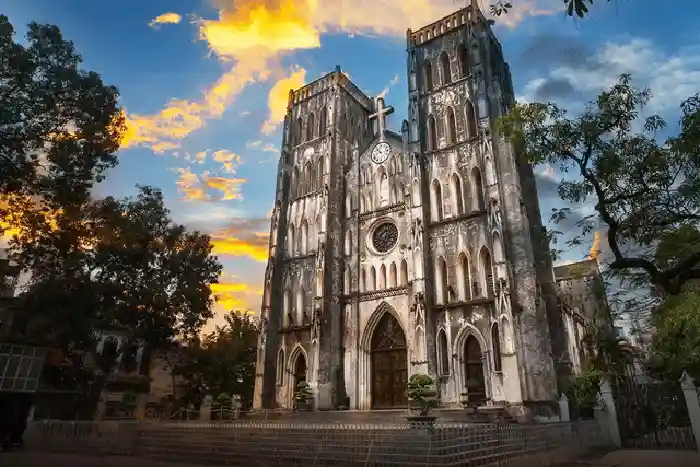
The Cathedral illuminated at Christmas time, Hanoi, Vietnam
After the French departure in 1954, widespread looting led to the loss of many historical and valuable objects. Nevertheless, the cathedral remains an important part of the spiritual life of Vietnamese Catholics. Nearly 7 million Vietnamese identify as Christians, and you may be surprised to see the cathedral full during Sunday Mass. Since January 2019, a French-language Mass has been held every Sunday at 10:00 a.m.
Long Bien Bridge (1903)
The Long Bien Bridge, originally called the Paul Doumer Bridge after the Governor-General of Indochina at the time, was inaugurated on February 28, 1903, after four years of construction. Contrary to popular belief, the bridge was not designed by Gustave Eiffel, but by the Daydé and Pillé company, which was later absorbed by the Eiffel Group in the second half of the 20th century.
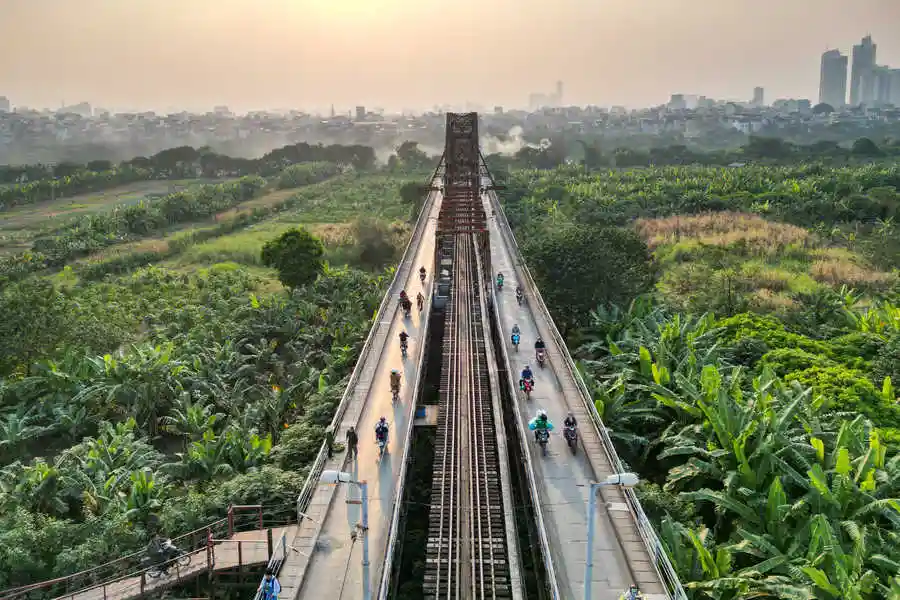
Long Bien Bridge, Hanoi, Vietnam
At the time, this bridge was the first steel bridge to span the Red River. It symbolized the impressive engineering capabilities of the French era and was once the fourth longest bridge in the world, standing as a true icon of the colonial period.
Presidential Palace (1906)
Located today next to Ho Chi Minh’s Mausoleum, the Puginier Palace was designed by architect C. Lichtenfelder and built between 1900 and 1906. During the French colonial period, it served as the residence of the Governor-General of Indochina. Twenty-three French governors succeeded one another in this palace until 1945.
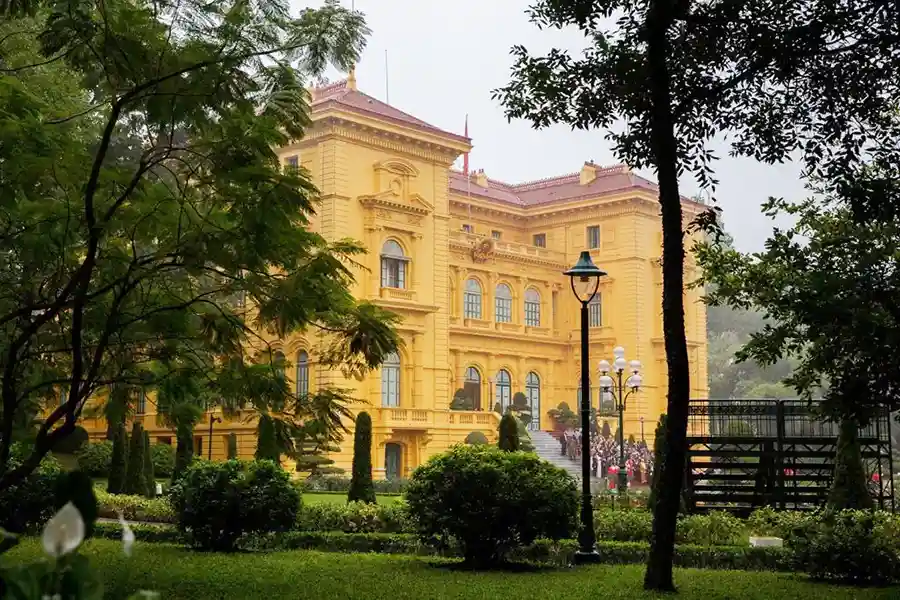
View of the Presidential Palace from its gardens, Hanoi, Vietnam
This building continues to hold great political significance today, as it now serves as the Presidential Palace, hosting official receptions for foreign heads of state.
It is worth noting that Ho Chi Minh chose not to live there, preferring instead a simple wooden house nearby, which still stands within the palace gardens. The Father of Vietnam’s Independence disliked the luxury and grandeur associated with political power, choosing instead to live modestly and remain close to the people.
Hanoi Opera House (1911)
The Hanoi Opera House is a symbol of the “French Quarter”, built in the early 20th century. Paul Bert Street (now Trang Tien Street) became the center of construction for numerous villas and municipal buildings during this period.
The street leads to the Hanoi Opera House, which was built between 1901 and 1911. Inspired by the Palais Garnier in Paris, the building is a masterpiece of neo-classical architecture that also incorporates Gothic elements, such as its columns and balconies.
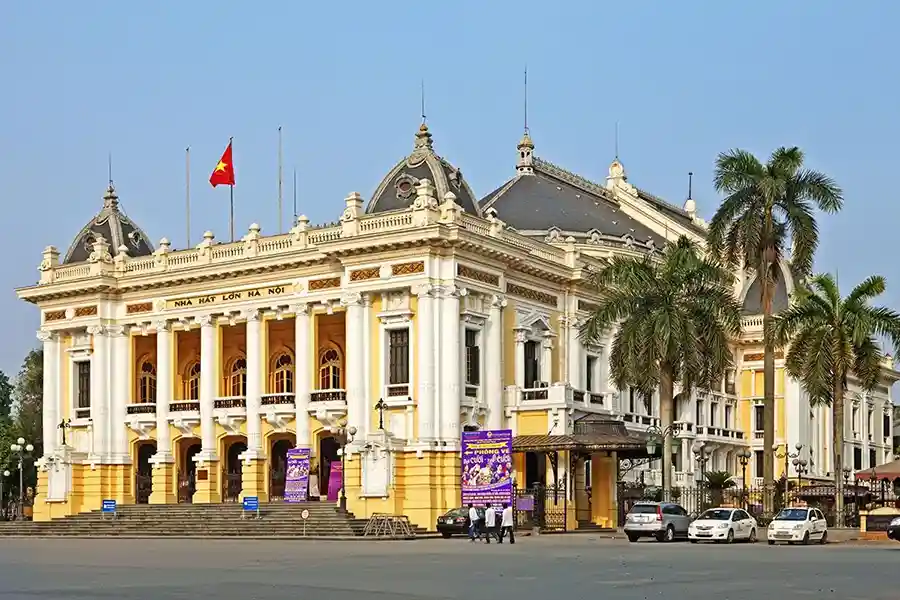
Hanoi Opera House
This opera house remains the largest theater in Vietnam today and hosts numerous cultural events. It is also historically significant as the site where the first session of the National Assembly was held in 1945.
Modern National History
A new chapter in Vietnam’s history began in 1945, with Ho Chi Minh’s Declaration of Independence on September 2nd. Two key sites in Hanoi embody the importance of this event: Ba Dinh Square and Ho Chi Minh’s Mausoleum.
Ho Chi Minh Mausoleum (1975) and Ba Dinh Square
Ba Dinh Square—formerly called Puginier Square during the French period—holds a powerful symbolic meaning in Vietnam’s modern history. It was here that Ho Chi Minh (born Nguyen Ai Quoc) read the Proclamation of Independence of the Democratic Republic of Vietnam on September 2nd, 1945.
Ho Chi Minh Mausoleum, Ba Dinh Square, Hanoi, Vietnam
Here is an excerpt from this historic declaration, which captures the spirit of the time:
“The French have fled, the Japanese have surrendered, the Emperor Bao Dai has abdicated; our people have smashed all the chains that have weighed upon us for nearly one hundred years to make our Vietnam an independent country. Our people have also overthrown the monarchical regime established for centuries to found a Republic. For these reasons, we, members of the provisional government representing the entire population of Vietnam, declare that we no longer have any connection with imperialist France, annul all treaties signed by France concerning Vietnam, and abolish all privileges that the French arrogated on our territory.”
It was not until 1954 that the French finally left, and later, in 1976, that the Americans also withdrew from Vietnam.
After his death in 1969, Ho Chi Minh was in many ways canonized by the Vietnamese communist regime. Construction of his mausoleum began in 1973, and the monument was inaugurated on August 29, 1975. Modeled after Lenin’s Mausoleum in Moscow’s Red Square, the building serves as a unifying symbol for the nation—linking political ideology with reverence for a national hero.
Through these monuments, we have traveled across key moments of Vietnam’s history. By visiting them in Hanoi, you will gain a deeper understanding of the diverse influences that have shaped the Vietnamese capital over the centuries.


